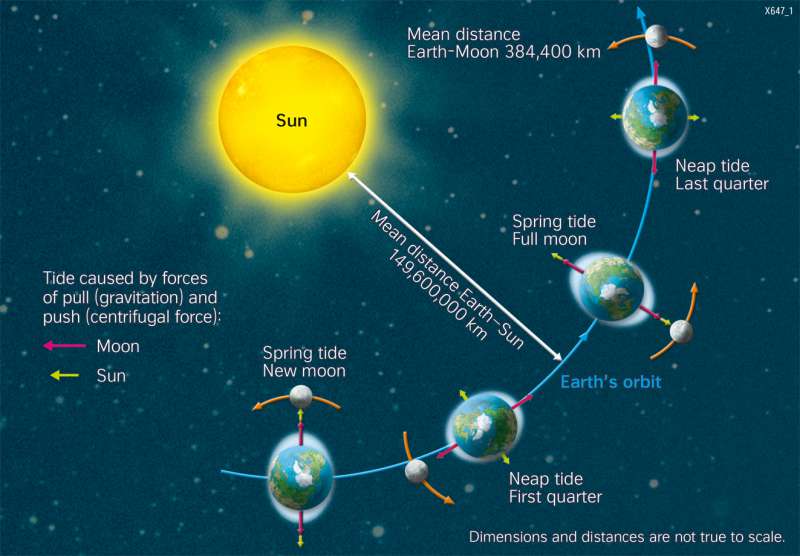Universe - Ebb tide and flood tide
978-3-14-100890-6 | Page 10 | Ill. 6

Overview
Tidal forces occur when different parts of a body in space are exposed to different forces. The gravitational forces of the Earth and Sun or Moon and the centrifugal force are involved in the formation of tides.
Centifugal force
The latter arises because, strictly speaking, it is not the Moon that rotates around the centre of the Earth. The Earth and the Moon, like an asymmetrical dumbbell, circle around their common centre of gravity, which lies about 1800 kilometres below the Earth's surface. The centrifugal force is the same at all points on the Earth's surface. At the centre of the Earth, gravitational and centrifugal forces are oppositely equal. On the side facing the Moon, gravitation is slightly predominant (tidal bulge), on the side facing away from the Moon, it is slightly weaker than the centrifugal force (second tidal bulge).
Additional gravitational force
The Sun also plays a role here. Because of the great distance between the Earth and the Sun, however, its gravitational influence on the tides is only about half as strong as that of the Moon. Since forces always add up vectorially, the resulting tidal effect depends on the relative position of the Sun, Earth and Moon. If they are in a line, it has the greatest effect (spring tide). If they are at right angles to each other, the effect is smallest (neap tide). The Earth with its rotation, which is much faster than the Moon's, rotates underneath the tidal bulges, which results in the two daily high and low tides. The shape of coastlines and seabeds as well as the Coriolis force and ocean currents modify the events locally. The atmosphere and the solid surface of the Earth also experience tidal differences of up to 40 centimetres.




